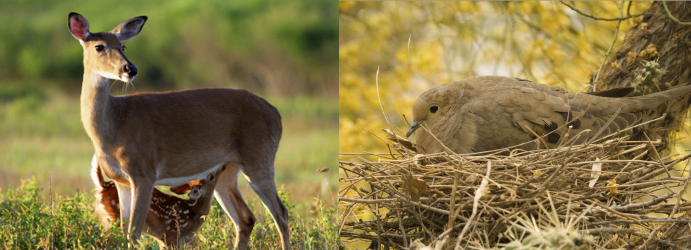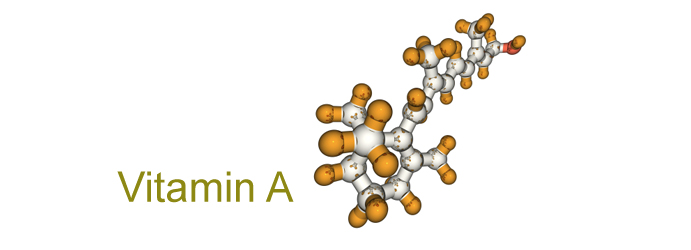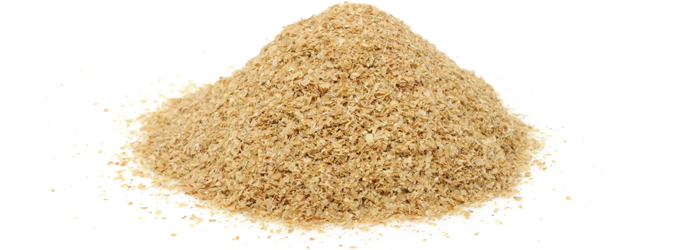Written on July 6th, 2012 by Greg Pollard
Summer is a wonderful time of year filled with backyard barbeques, swimming pools, sporting events and family vacations. For most of us, it is a time to relax, recharge and enjoy life at a little slower pace. For wildlife, it is a little different. Dove and quail are brooding, turkey poults have hatched, and deer, elk and pronghorns have their babies on the ground. Summer is a critical period for the survival and perpetuation of all wildlife species. The young need to grow and survive for breeding the following year, especially in game birds like dove and quail where life expectancy is less than two years due to mortalities approaching 80%. Turkeys need to be eating within 12-24 hours of birth, dove will be eating on their own in a couple of weeks, and the larger wildlife species will be nursing and learning to eat by following their moms around.

When we plan our vacations, we think about boarding our pets, arrange for someone to feed and keep an eye on our livestock, but we leave wildlife to fend for themselves during this difficult and critical time of year. Much of the United States from California to Florida and Texas to the Dakotas have seen moderate to severe drought over the last couple of years, and this year it seems little has improved. In areas where hay is scarce and feedstuffs are at a premium, wildlife need our help to survive and thrive. In many areas, Labor Day weekend is the time of year when everything changes for wildlife as hunters return to deer camps and hunting leases to clean up cabins, mend deer blinds, and fill feeders. The timing of this supplemental nutrition may make or break the health and size of not only the deer herd but also positively impact the dove, quail, turkey and a host of other wildlife species.
Many people have made it a yearly tradition to plant food plots for deer and wildlife in the spring to help improve the nutrition of wildlife throughout the summer. If the last few years have taught us anything, it is you cannot always count on Mother Nature to cooperate. So if you live in an area where you cannot always count on spring and summer rains to make your food plots productive, what can you do? First, you can decide what your goals are from feeding: do you want to maintain, improve, or drastically alter the makeup of the wildlife in your area? Regardless of your individual goals, there is some time proven steps anyone can take to help the wildlife in their area.
Water is an essential element to survival for all wildlife species. How we supply water to wildlife can vary dramatically from livestock water troughs to wildlife specific water sources supplied from buried tanks with extremely large catchment surfaces or by simply over turning a garbage can lid or plugging up an old bathtub and letting rainfall take care of keeping it filled. The important factor is not how we supply water but that we do. Larger wildlife like white-tailed deer need accessible water sources about every section, and smaller mammals and song birds need water sources about every 80 acres in order to maintain healthy populations. Some wildlife like bobwhite quail, although it prefers a higher density of water sources like those of song birds, can get by for extended periods without drinking; whereas mourning doves need to drink water after eating to provide crop milk for their young. All wildlife can be inconsistent when they choose to drink so it is important that suitable, adequate water supplies are available on a permanent basis.
Another item to consider in regards to wildlife is vitamin and mineral nutrition. At any feed or hunting supply store, you will find shelves upon shelves dedicated to meeting the vitamin and mineral needs of white-tailed deer and other wildlife. While some of these items are good, others may be less than ideal. It is important to remember that even the poorest mineral is better than no mineral at all. Minerals and vitamins come in many forms from loose minerals or powders that you place on the ground or in a feeder, liquids that you pour on a stump, rock, or on the dirt, blocks that you can place wherever you like, or even as a part of your supplemental feed. Mineral requirements among species differ greatly but there are a few to concentrate on during the summer: calcium and phosphorus are important for antler production, egg shell quality, and milk production. Other minerals to consider are the trace minerals, especially zinc, manganese, copper, and iodine.

Trace minerals have roles in the same physiological functions as calcium and phosphorus, but they have expanded roles in health, reproduction, and growth. Vitamins to remember during the summer include: Vitamin A and E for all species, and B vitamins for a lesser amount of wildlife. If you have green, lush grass you can assume that your Vitamin A and E levels are adequate. When the grass dries up it is a safe bet that the levels of the vitamins are deficient. Vitamins are typically incorporated into the mineral formulation so be sure they are included and talk with your feed supplier or nutritionist to ensure that your vitamin and mineral levels are satisfactory. While not as exciting as the newest corn-apple-licorice-cinnamon flavored protein nugget containing all 20 standard amino acids plus a few nonstandard ones thrown in for good measure, vitamins and minerals are extremely important to the health and survival of any wildlife population. Consider them equal to water in importance.
Finally, energy and protein come in many forms and from a variety of ingredients used commonly in diet formulation that range from poor quality, highly signified roughage to high quality protein from animal and vegetable sources. Wildlife feeds supply energy in three primary forms, fat, fiber and/or starch. The amount and type of each of these depends on the type of animal being fed. They all share the need for a supplemental energy sources that is digestible, that enhances/does not negatively impact digestion, and that provides enough nutrients to meet the demands of milk production, egg laying, or growth. Energy in the form of fiber from wheat middlings or soybean hulls may be exactly what ruminant wildlife requires. A lactating female might prefer the fat from rice bran, while a game bird may need milo, corn, or millet to get over the summer hump. Unless you are feeding pure corn starch, animal fat or vegetable oil it is likely that your energy source is supplying some level of protein to the diet as well. When buying protein a couple of things to consider are the quality and digestibility of the protein source. Quality in this case simply refers to the level of essential amino acids in the protein. For most wildlife feeds, soybean meal would be considered the gold standard for both quality and digestibility. Due to price and availability, many wildlife feeds contain processed grain by-products to supply protein. While cost effective, they may not be as balanced in amino acids or digestible as a diet made with soybean meal. Ensuring a sufficient dietary quality for wildlife is important to not attempt to fill the animal with feed, but to allow the animal to adequately extract nutrients from the feed to sustain productivity. When considering ingredients for wildlife formulation, quality should be maximized or at least optimized to prevent animal performance shifts to maximize return on your purchase. One final note, during rough summers like many areas are currently experiencing, fiber is one of the last nutrients that wildlife needs.

ASP would like to thank Dr. Greg Pollard for contributing his insight and expertise to our quarterly newsletter. To contact Dr. Pollard, he can be reached by phone at 830.832.4038, or by email at [email protected].
